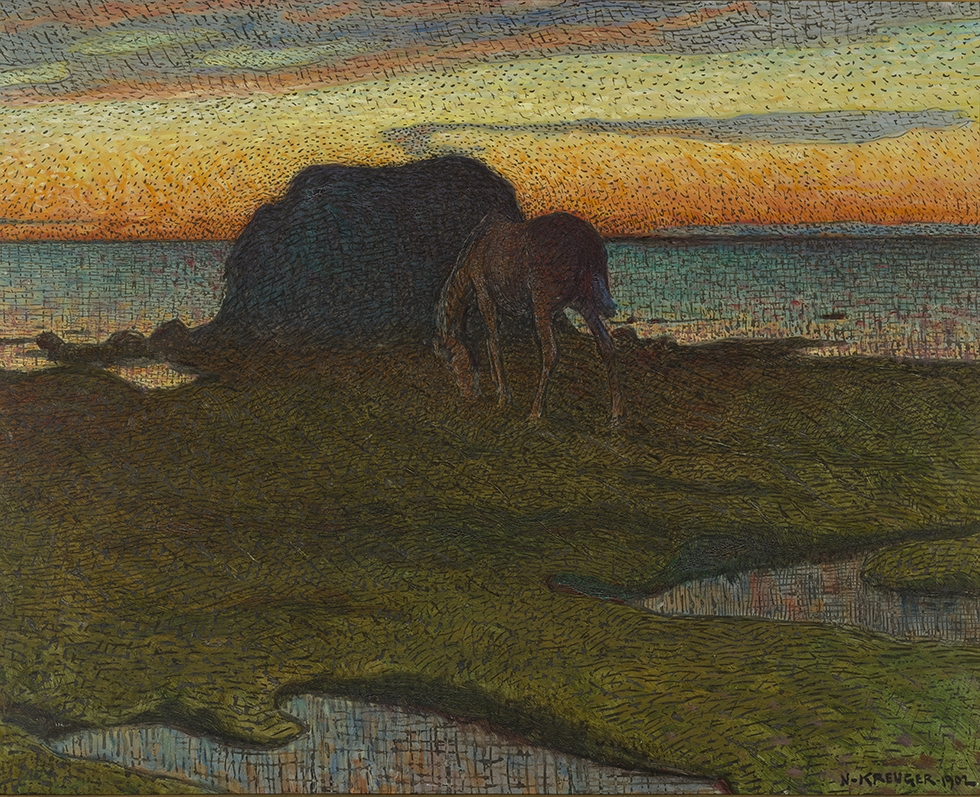The artworks depict states of change; dusk sums up the day and borders on night, on death, while dawn looks ahead to a new day and a new life. These transitional stages were appreciated by the symbolists of the time who often interpreted decisive events through the cycles of time and nature. Autumn and spring were popular motifs for the same reason, as were pairs of opposites such as day and night, life and death. These also appear abundantly in the museum’s collections.
As autumn turns to winter and the Thielska Gallery’s first hundred years as a museum draws to a close, soon to transition into a new century, we highlight the dusk and dawn art that is so characteristic of the place. There are works of art in several different techniques by artists such as Richard Bergh, Nils Kreuger and Karl Nordström, their colleagues and students in the Artists’ Union as well as counterparts in the Nordic neighboring countries, mainly from the collections but also through supplementary loans. The idea is that the entire museum should be bathed in a beautiful dim light and show the special natural mysticism with heightened moods that fulfilled the artists of that time.




